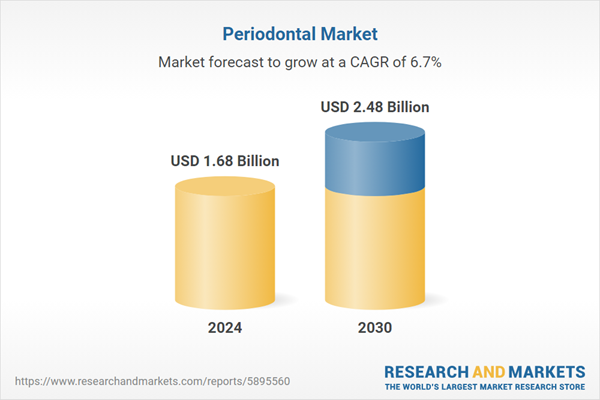Speak directly to the analyst to clarify any post sales queries you may have.
10% Free customizationThis report comes with 10% free customization, enabling you to add data that meets your specific business needs.
Key Market Drivers
Growing Awareness of Oral Health
An increasing focus on oral hygiene and its broader impact on overall health is a major factor driving the global periodontal market. Consumers are becoming more proactive in maintaining their dental health due to rising awareness driven by public education campaigns, online resources, and healthcare professionals. This has led to higher demand for both preventive and treatment-oriented periodontal services and products. Individuals now more frequently schedule routine dental visits, adopt better hygiene practices, and seek early treatment for gum issues. The growing recognition of the link between oral health and systemic conditions further reinforces the importance of periodontal care, fueling market growth and fostering a preventive healthcare mindset globally.Key Market Challenges
Oral Health Disparities
A key challenge affecting the global periodontal market is the disparity in access to dental care among various population groups. Factors such as socioeconomic status, geographic location, and race or ethnicity contribute to unequal oral health outcomes. Individuals in low-income communities often face limited access to dental insurance and preventive services, while rural areas may lack adequate dental facilities and professionals. Ethnic minorities and underserved groups are more likely to suffer from periodontal diseases due to cultural, financial, and educational barriers. These disparities hinder the widespread adoption of periodontal care and present a significant challenge in delivering equitable dental health services globally.Key Market Trends
Preventive Dentistry
The emphasis on preventive dentistry is becoming a central trend within the global periodontal market. By encouraging daily oral care routines - such as regular brushing, flossing, and mouthwash use - along with routine dental checkups and cleanings, preventive dentistry aims to reduce the onset of gum diseases. These measures help detect early symptoms and mitigate the progression of conditions like gingivitis and periodontitis. Public health campaigns and educational efforts are further promoting awareness of preventive dental practices. This shift toward preventive care not only reduces the burden of advanced periodontal disease but also supports overall oral and systemic health, thereby increasing the demand for related products and services.Key Market Players
- Medtronic PLC
- Straumann AG
- The 3M Company
- Bausch Health Companies
- Dentsply Sirona
- Pfizer Inc.
- Novartis AG
- Dentsply Sirona
- Danaher Corporation
- GC Corporation
Report Scope:
In this report, the Global Periodontal Market has been segmented into the following categories, in addition to the industry trends which have also been detailed below.Periodontal Market, By Therapy:
- Non-surgical Treatment
- Surgical Devices
Periodontal Market, By End User:
- Hospitals & Clinics
- Ambulatory Surgical Centers
- Others
Periodontal Market, By Region:
- North America
- United States
- Canada
- Mexico
- Europe
- France
- United Kingdom
- Italy
- Germany
- Spain
- Asia-Pacific
- China
- India
- Japan
- Australia
- South Korea
- South America
- Brazil
- Argentina
- Colombia
- Middle East & Africa
- South Africa
- Saudi Arabia
- UAE
Competitive Landscape
Company Profiles: Detailed analysis of the major companies present in the Global Periodontal Market.Available Customizations:
With the given market data, the publisher offers customizations according to a company's specific needs. The following customization options are available for the report.Company Information
- Detailed analysis and profiling of additional market players (up to five).
This product will be delivered within 1-3 business days.
Table of Contents
Companies Mentioned
- Medtronic PLC
- Straumann AG
- The 3M Company
- Bausch Health Companies
- Dentsply Sirona
- Pfizer Inc.
- Novartis AG
- Dentsply Sirona
- Danaher Corporation
- GC Corporation
Table Information
| Report Attribute | Details |
|---|---|
| No. of Pages | 180 |
| Published | April 2025 |
| Forecast Period | 2024 - 2030 |
| Estimated Market Value ( USD | $ 1.68 Billion |
| Forecasted Market Value ( USD | $ 2.48 Billion |
| Compound Annual Growth Rate | 6.7% |
| Regions Covered | Global |
| No. of Companies Mentioned | 10 |









